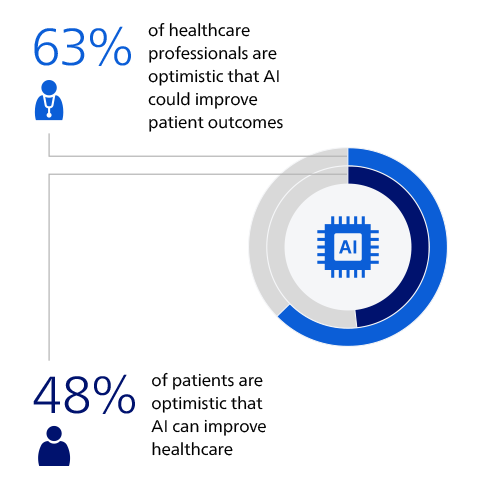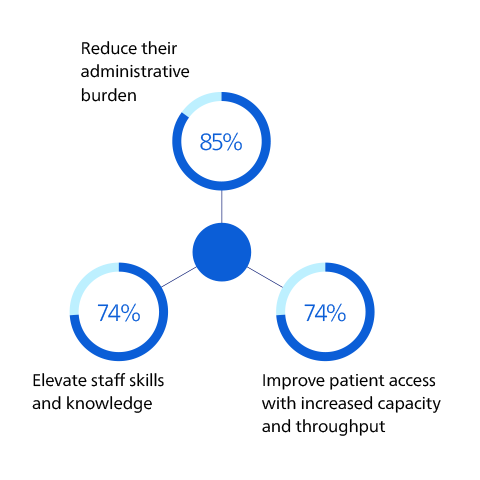United States research
AI has taken the world by storm in recent years, including healthcare. Yet its full potential remains untapped. This year’s Future Health Index report explores this potential, how AI is already helping clinicians and patients today, and what is needed to build trust in healthcare AI, enabling better adoption of the technology and better patient outcomes.
The largest global survey of its kind, analyzing the perspectives of healthcare professionals and patients on the use of AI and digital technologies in healthcare.
Healthcare professionals are more optimistic about AI than patients
Most healthcare professionals are optimistic about AI’s potential to improve healthcare. Patients are less convinced, highlighting a notable trust divide.

AI can improve efficiency and the working lives of healthcare professionals
They also see potential for AI to have significant
Healthcare professionals recognize that AI
technology can free up their time and
improve access to care.
positive impact on their department:

AI can improve efficiency and the working lives of healthcare professionals
They also see potential for AI to have significant positive impact on their department:
Healthcare professionals recognize that AI technology can free up their time and improve access to care.

AI helps healthcare professionals deliver better patient care
Healthcare professionals stated that AI can positively impact their department by shortening procedure times and increasing personalized care.

“AI is reshaping healthcare – but its future depends on trust, transparency and collaboration with clinicians and patients. Together, we can unlock AI’s potential to reduce provider burnout and elevate patient care.”
Download the United States report
Download the United States report

Global report
Read about the perspectives of healthcare professionals and patients on healthcare AI
The Future Health Index is commissioned by Philips In its 10th edition, the Future Health Index 2025 investigates how innovative technologies, particularly artificial intelligence (AI), can empower healthcare professionals to deliver better care for more people. Two quantitative surveys were carried out among over 1,900 healthcare professionals and over 16,000 patients in 16 countries (Australia, Brazil, Canada, China, France, Germany, India, Indonesia, Japan, Netherlands, Saudi Arabia, Spain, South Africa, South Korea, the United Kingdom and the United States). The surveys were conducted from December 2024 to April 2025.



